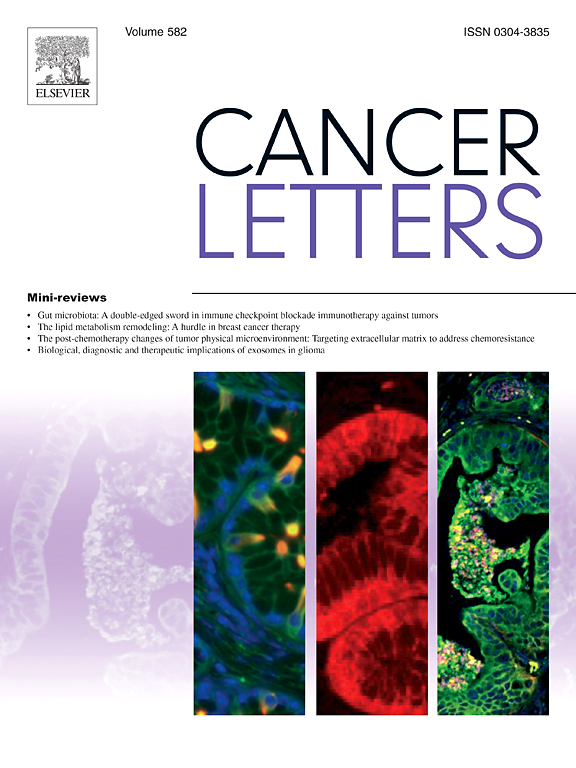Tumor-derived miR-203a-3p potentiates muscle wasting by inducing muscle ferroptosis in pancreatic cancer
IF 9.1
1区 医学
Q1 ONCOLOGY
引用次数: 0
Abstract
Pancreatic cancer (PC) cachexia, characterized by profound muscle wasting and systemic inflammation, remains a formidable clinical challenge due to its multifactorial nature and complex molecular underpinnings. This study delves into the intricate interplay between microRNA (miRNA) dysregulation and ferroptosis, a form of iron-dependent cell death, in PC cachexia. Specifically, we identified tumor-derived miR-203a-3p as a pivotal miRNA that promotes muscle atrophy by upregulating muscle ferroptosis. Our findings revealed that miR-203a-3p targets zinc finger E-box binding homeobox 1 (ZEB1), subsequently enhancing the expression of the iron transporter solute carrier family 11 member 2 (SLC11A2), thereby facilitating ferroptosis-associated skeletal muscle cell death. Through in vivo experiments using a PC cachexic mouse model, we demonstrated that inhibiting ferroptosis effectively attenuated muscle wasting, highlighting its critical role in the pathogenesis of PC cachexia. These results provide a molecular framework elucidating how miRNA regulation and ferroptosis converge to drive muscle atrophy, offering novel therapeutic avenues for mitigating cachexia in PC patients. By targeting these pathways, we aim to improve muscle preservation and overall survival in this devastating disease.
求助全文
约1分钟内获得全文
求助全文
来源期刊

Cancer letters
医学-肿瘤学
CiteScore
17.70
自引率
2.10%
发文量
427
审稿时长
15 days
期刊介绍:
Cancer Letters is a reputable international journal that serves as a platform for significant and original contributions in cancer research. The journal welcomes both full-length articles and Mini Reviews in the wide-ranging field of basic and translational oncology. Furthermore, it frequently presents Special Issues that shed light on current and topical areas in cancer research.
Cancer Letters is highly interested in various fundamental aspects that can cater to a diverse readership. These areas include the molecular genetics and cell biology of cancer, radiation biology, molecular pathology, hormones and cancer, viral oncology, metastasis, and chemoprevention. The journal actively focuses on experimental therapeutics, particularly the advancement of targeted therapies for personalized cancer medicine, such as metronomic chemotherapy.
By publishing groundbreaking research and promoting advancements in cancer treatments, Cancer Letters aims to actively contribute to the fight against cancer and the improvement of patient outcomes.
 求助内容:
求助内容: 应助结果提醒方式:
应助结果提醒方式:


